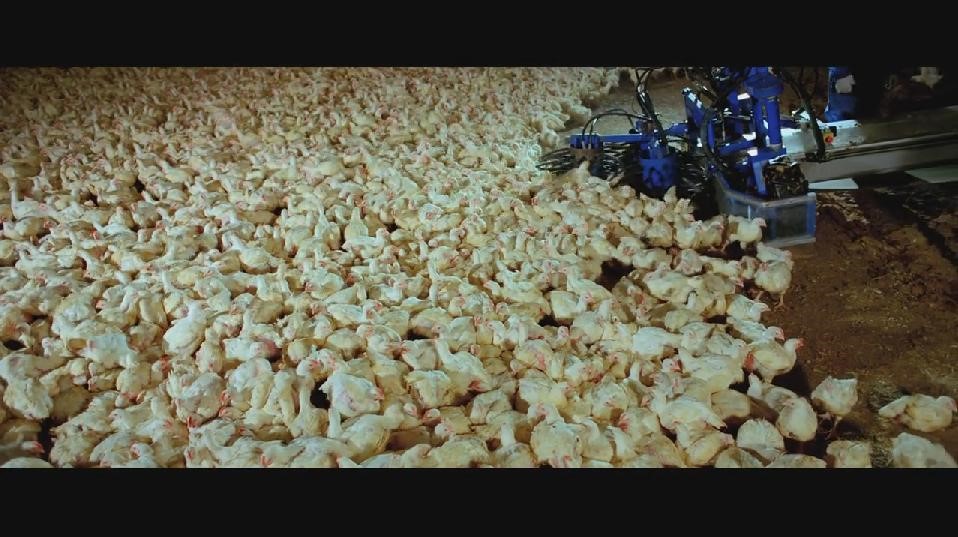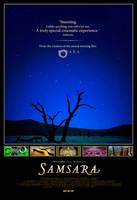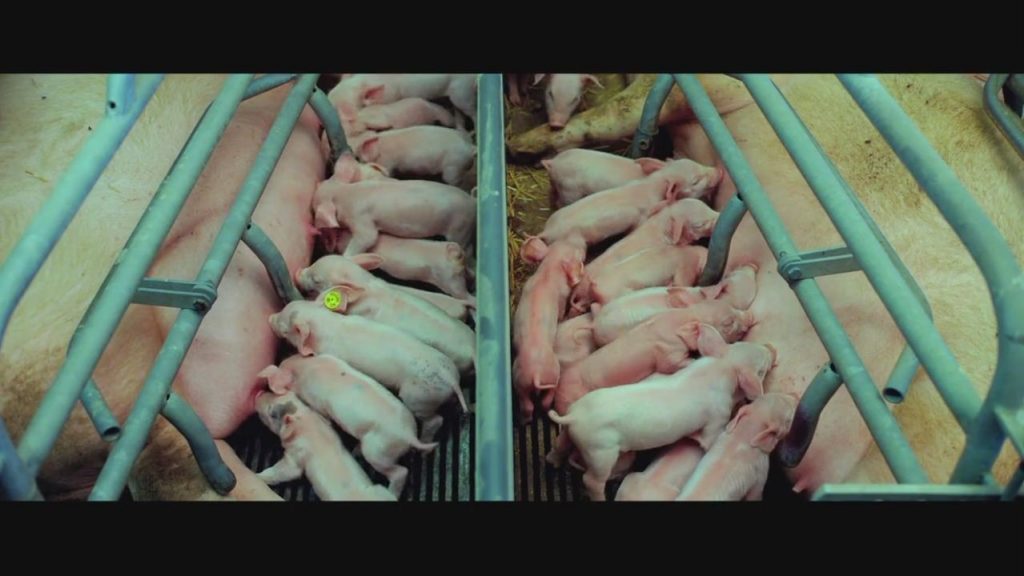Samsara (2011) is a non-narrative documentary directed by Ron Fricke.[1] “Samsara” is a Sanskrit word for the cycle of birth, life and death. Through this theme, the film aims to ‘illuminate the links between humanity and the rest of nature, showing how our life cycle mirrors the rhythm of the planet’.[2]

One particular sequence depicts the different stages of the meat industry, from farm to supermarket. The sequence begins with a slow pan on a vast amount of chickens. The composition of the shot means the chickens fill the frame as if they are one indistinct mass. As the shot continues, a machine enters the shot, hoovering the chickens up into it (see fig. 1). The chickens can be seen struggling and flapping as the machine drives through them. There is a cut to more chickens being thrown, shoved and stuffed into small drawers while they continue to flap and squash each other. In both shots, despite the noises and the movements they make, the chickens are treated as if they are objects who require no care or consideration. The detached, long take and absence of voice-over provides the audience with no explicit reference to meaning. Rather, the audience are left to take their own individual meaning and emotive response from the sequence.

There is then a cut to multiple time-lapse shots that capture the repetitive, dehumanised, and emotionless nature of industrial farming. As each meat carcass moves in fast-forward across the frame, the repetitive, pulsating and rhythmic music increases in volume and more pointedly emphasises this seemingly endless stream of dead animals. The use of time-lapse is an artistic and aesthetic effect that creates a distanced perspective of time as well as of the movements and the rhythms of the industrial process. In doing so, the process is represented as increasingly artificial, mechanical and unnatural as patterns emerge that would be otherwise imperceptible to the human eye.
Further, the editing used carefully conveys meaning through association of imagery. Befitting the theme of “samsara”, a sequence of shots begins with a shot of piglets feeding off their mothers. They are imprisoned and incapacitated by metal bars in an image of a fundamentally natural phenomenon taking place within the unnatural environment of industrial farming. This is followed by a cut to pig carcasses moving on conveyor belts in time-lapse, each being cut, torched and gutted as they go. The positing of these two shots one after the other emphasises the connection between life and death that the film wishes to illuminate but does so purely through mise-en-scene and editing.

Despite the film taking the form of a documentary, its construction carefully conveys meaning through artistic and aesthetic effects. In doing so, this sequences becomes a painful indictment of industrial farming, portrayed through cinematic techniques that emphasise a distanced emotional connection between humans and animals.
[1] Samsara. Dir. Ron Fricke. Oscilloscope Laboratories. 2011.
[2] About Samsara, <http://www.barakasamsara.com/samsara/about> [accessed 16 January 2016], para. 2.